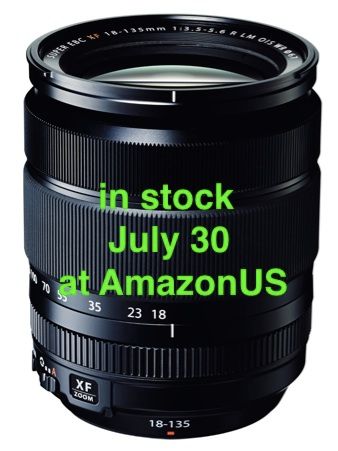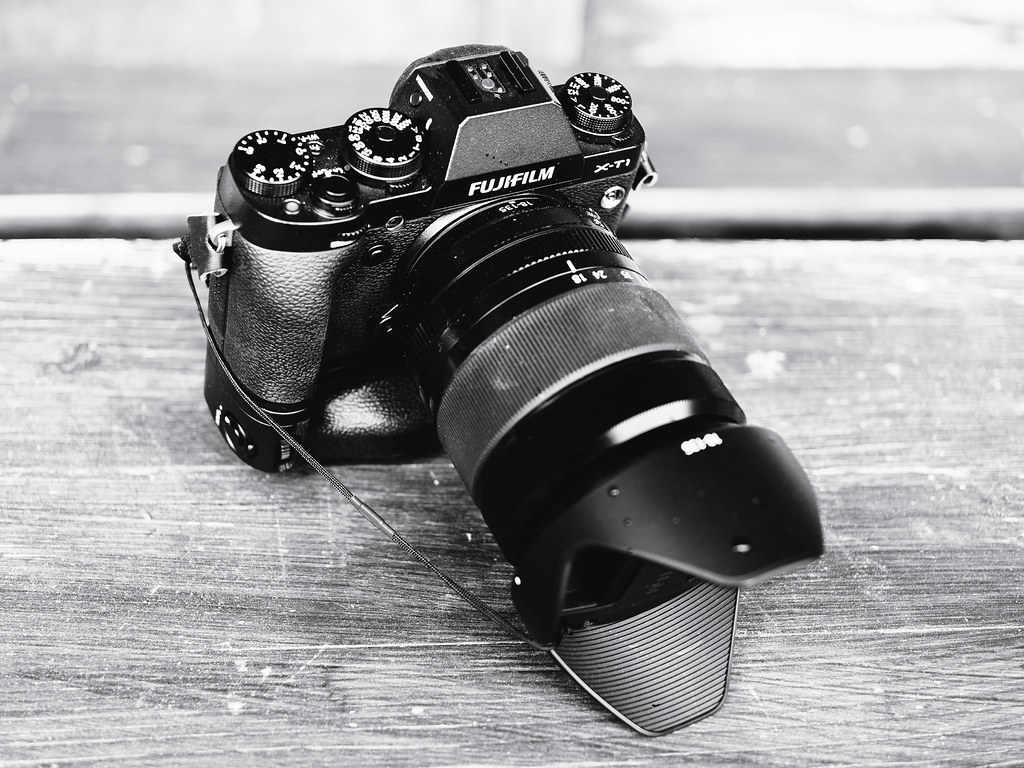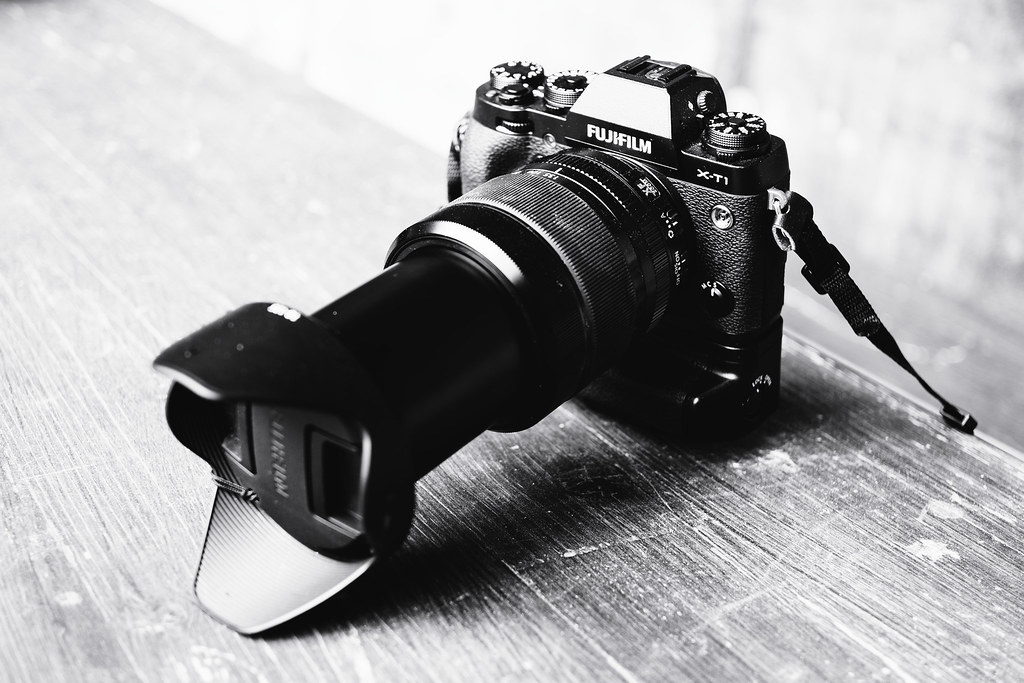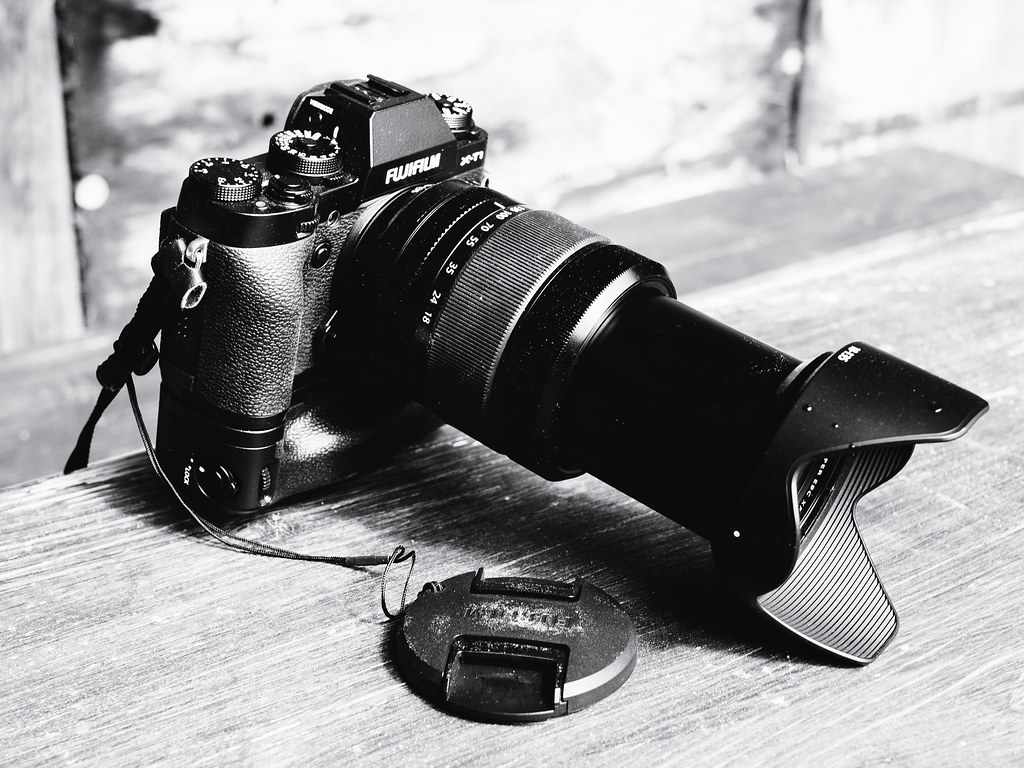First Look: XF18-135mmF3.5-5.6 R LM OIS WR
PRE-ORDERS (and support FR)
Today you can support my work here on Fujirumors. If you choose to pre-order it using one of the shoplinks (AmazonUS, BHphoto, Adorama, wexDE, wexUK & Co) in this post, FR will get a small commission on it. It won’t cost you a single penny extra on your gear. Thanks in advance to those who decide to support this blog… your support will keep this blog running.
PRE-ORDERS
XF 18-135 pre-orders: USA: BHphoto / AmazonUS / Adorama – EUROPE: wexUK / wexDE / PCHstore
_ _ _
First Look: XF18-135mmF3.5-5.6 R LM OIS WR
Talk to Rico (open forum for questions & feedback)
Fuji X Secrets Workshops – Rico’s Flickr sets
Mastering the Fujifilm X-E1 and X-Pro1 – The Fujifilm X-E2 – Beyond the Manual
—
After postponing the date at least twice, Fujifilm is finally announcing its highly-anticipated 18-135mm weather resistant zoom lens for the X-T1 and other X-Mount system cameras, promising very good image quality and world record breaking 5 stops OIS performance at a reasonable price (799 EUR incl. VAT here in Germany). All this in a more compact package than its Canikon competition (EF-S 18-135mmF3.5-5.6 IS STM and Nikkor 18-140mmF3.5-5.6 G ED VR).
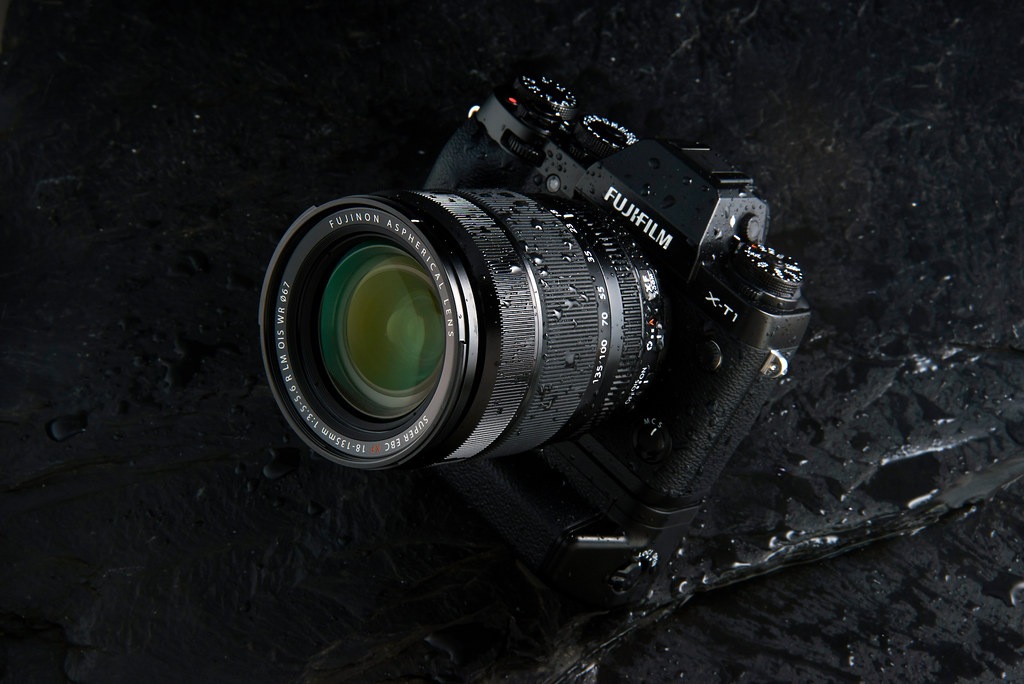
I was able to shoot with a prototype and an early pre-production sample of the lens in May and June, also testing it at two recent Fuji X Secrets workshops south of Nuremberg. Since all my current workshop offerings are sold out except for one remaining slot for our workshop in Berlin on 20JUL, I have decided to offer another workshop in the Nuremberg area on 9AUG. Registration is now open.
As you know, the X-T1 features a weather resistant body, making the XF18-135mmF3.5-5.6 R LM OIS WR a fitting companion. “WR” means Weather Resistant, and according to Fuji, the lens features a dust-proof and waterproof structure with weather resistant sealing applied to more than 20 different areas.
Most of this sealing technology goes on inside the lens. At first glance, it’s hard to spot or feel any differences between this new WR zoom and conventional XF zooms like the 18-55mmF2.8-4.0. This is a good thing, as the weather sealing of the X-T1 resulted in buttons and switches becoming somewhat less accessible and responsive than in conventional models like the X-E2. Not so with this weather resistant zoom.
The new lens comes with a plastic hood and a 67 mm filter thread. It features the usual switches for OIS on/off and aperture mode on the barrel, and there’s also an unmarked aperture ring, a zoom ring and a manual focus ring.
Size-wise, the new zoom is positioned between Fuji’s XF10-24mmF4 wide-angle zoom and the XF55-200mmF3.5-4.8 telephoto zoom. As usual, it looks heavier than it actually is: The lens weighs 490 grams, making it just as heavy (or light) as its before-mentioned (and less compact) competitors from Canikon.
Looking at the optics, the new 18-135mm zoom appears to play in a different league, though. With four aspherical lenses (Canikon: one) and two ED glass lenses (Canikon: one), Fuji’s WR zoom easily wins bragging rights in the 18-135mm APS-C lens construction department.
As with most modern zoom lenses, there’s some minor optical distortion which is digitally corrected in-camera and in external RAW converters that support RAW metadata correction, such as Lightroom/ACR, Capture One, Silkypix, Iridient Developer or Apple Aperture (the latter lacking automatic vignetting correction).
Distortion changes from barrel to pincushion type somewhere between 20 and 30 mm focal length. The overall amount of optical distortion is very moderate and surprisingly low for a lens of this reach. I can provide examples with and without digital distortion correction as soon as production samples of the lens become available.
The autofocus of the lens is based on an inner focus system and works very fast, with a CIPA tested maximum AF speed of 0.10 seconds. This is faster than the CIPA numbers for the Canikon competition, which clock in at 0.13 seconds (Canon) and 0.39 seconds (Nikon).
In my practical tests with a yet unfinished pre-production sample using beta firmware on an X-T1 and X-E2, I found the lens to focus quicker and with a better AF-C tracking hit rate than Fuji’s current 18-55mm and 55-200mm XF zooms.
By the way: I made the above “product shots” with an X-M1 and a XF27mm pancake lens. Click here to see the set on Flickr. Initially dismissed as an inferior product, the pancake lens seems to become more popular by the hour.
New 5 Stops OIS
One genuine highlight of the new XF18-135mm zoom is its improved optical image stabilizer (OIS): Fujifilm in promising five stops of additional headroom in the slow shutter speed department. This claim has of course been confirmed by CIPA, making the XF18-135mmF3.5-5.6 the first (and currently only) existing lens featuring a five stops OIS.
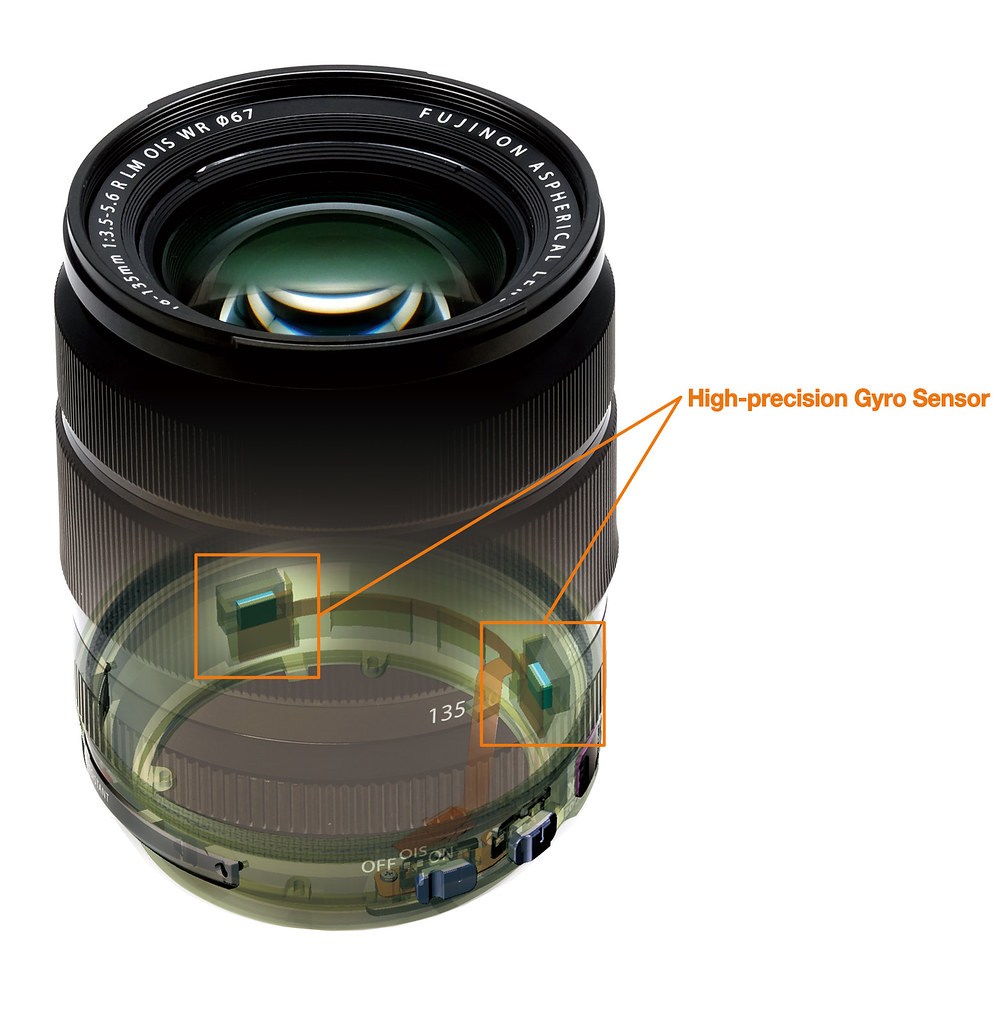
My initial tests with a pre-production sample support these assertions. According to Fuji, the world record OIS performance is possible thanks to two newly developed high-precision gyro sensors and a unique algorithm that also works at very slow shutter speeds like 1/4s.
Fujifilm is very confident about its improved OIS technology and has even released a video that is directly comparing the OIS of the new XF18-135mm zoom with a [shoplink 25819]Canon EF-S 18-135mm lens[/shoplink]. Click here to watch the video in case you have missed it elsewhere.
Weather Sealing

Fuji says that in order to protect the lens construction from water and dust, joint parts have been sealed with more than 20 rubber rings. A ventilator has been installed in the lower part of lens barrel to realize air circulation while preventing water and dust from entering. When production samples become available next month, I’m sure it won’t take long till a reviewer takes a shower with it.
Shooting Experience and Sample Images
I found shooting with this new zoom pretty enjoyable. The key word here is versatility. Covering the full-frame equivalent of 27-206mm, the XF18-135mm is designed to be the only lens you may need during a trip or vacation.


With a minimum focus distance of 45 cm at all focal lengths, it even qualifies as a light tele macro lens.


SOOC JPEG

SOOC JPEG
Sadly, I can’t show you any full-size samples, yet, as both the hardware and the software of my lens and camera weren’t final. Yes, you read correctly: Your camera will need another firmware upgrade in order to fully support the 18-135mm zoom.
I will open a sample gallery after I have received a final or close-to-final copy of the lens.

SOOC JPEG

SOOC JPEG

SOOC JPEG
Regarding ergonomics, I found it best to use the lens on an X-T1 with a vertical grip or an additional hand grip. Fuji is now offering three different Arca Swiss compatible hand grip sizes, with the medium sized grip being the most popular.
Control ring operation is quite smooth, and the lens is almost silent thanks to its built-in linear motor technology.

SOOC JPEG

SOOC JPEG

SOOC JPEG
Specifications
|
Name |
Fujinon Lens XF18-135mm F3.5-5.6 R LM OIS WR |
|
Lens configuration |
16 elements in 12 groups (4 aspherical elements and 2 ED lenses) |
|
Focal length |
f=18-135mm (35mm format equivalent: 27-206mm) |
|
Angle of view |
76.5°- 12° |
|
Maximum aperture |
F3.5-5.6 |
|
Minimum aperture |
F22 |
|
Number of aperture blades: Step size: |
7 (rounded diaphragm opening) 1/3 step (17 steps) |
|
Focus range |
Normal: 0.6m~∞ Macro: 0.45m~∞ |
|
Maximum magnification |
0.27x |
| External dimensions:Maximum diameter x length (approx.)(distance from tip to standard mount flange) |
φ75.7mm x 97.8mm (Wide-angle) / 158mm (Tele) |
|
Weight (approx.) (excluding lens cap and hood) |
490g |
|
Filter size |
φ67mm |
For your convenience, here’s a TOC with links to my previous X-PERT CORNER articles:
- X-E2: Behind Firmware 2.00
- First Look: Fujifilm TCL-X100 Teleconverter for X100(S) Cameras
- First Look: Fujinon XF10-24mmF4 R OIS
- First Look: Fujifilm X-T1
- First Look: Fujinon XF56mmF1.2 R
- Exposing Right
- Using Auto-ISO
- Using Face Detection
- First Look: Fujifilm XQ1
- PDAF & LMO Lens Firmware Updates Coming in November
- First Look: Fujifilm X-E2
- How Fuji could save the X-M1
- X-A1 vs. X-M1: Photo Ninja Edition
- X-A1 vs. X-M1: the Shootout
- Using the Fujifilm X-A1 [& X-M1]
- First Look: Fujinon XF23mmF1.4 R
- RAW Converter Shootout Results
- Ultimate RAW Converter Shootout
- First Look: X-M1 with New Kit Zoom and Pancake Lens
- Zeiss Touit vs. Fujinon XF
- Remote Shutter Control for X Series Cameras
- Apple Camera RAW, X-Trans and EXR
- First Look: XF55-200mmF3.5-4.8 R LM OIS
- Studio X
- Using the X100S
- Using the X20
- X100S vs. X100
- X20 vs. X10
- RAW, JPEG, Silkypix and “Fuji Colors”
- Adapting Third-Party Lenses (updated with Speed Booster)
- RAW for JPEG Shooters…
- Tips for Updating your Firmware
- How to Clean the X-Trans Sensor
- Using the XF14mmF2.8 R
- Decoding XF18-55mmF2.8-4 R LM OIS
- Comparing RAW converters: JPEG vs. Lightroom, Capture One, Silkypix & RPP
- XF14mmF2.8 R appears to be almost distortion free
- How to Expand Dynamic Range
- How to Use Extended ISO
- EXR, anyone?
- Capture One – When the Going Gets Tough…
- Using Shooting Profiles and the Quick Menu
Rico Pfirstinger studied communications and has been working as journalist, publicist, and photographer since the mid-80s. He has written a number of books on topics as diverse as Adobe PageMaker and sled dogs, and produced a beautiful book of photographs titled Huskies in Action (German version). He has spent time working as the head of a department with the German Burda-Publishing Company and served as chief editor for a winter sports website. After eight years as a freelance film critic and entertainment writer in Los Angeles, Rico now lives in Germany and devotes his time to digital photography and compact camera systems. His book “Mastering the FUJIFILM X-Pro1” (Kindle Edition) (Apple iBook Store) (German version) is available on Amazon and offers a plethora of tips, secrets and background information on successfully using Fuji’s X-Pro1 and X-E1 system cameras, lenses and key accessories.


